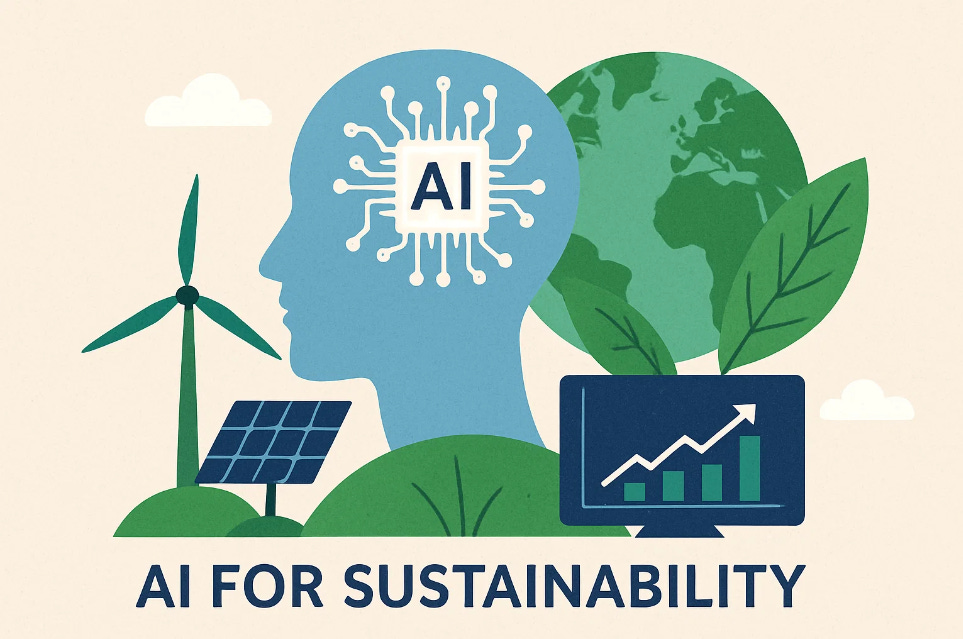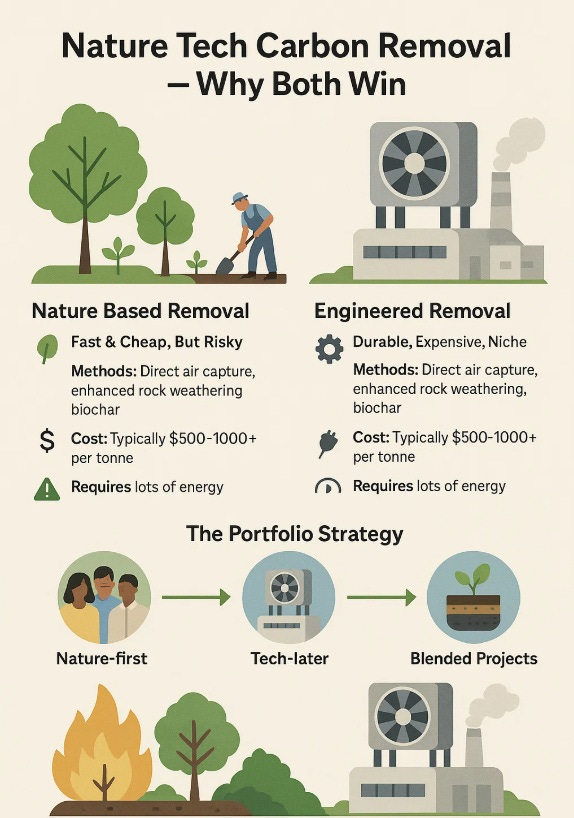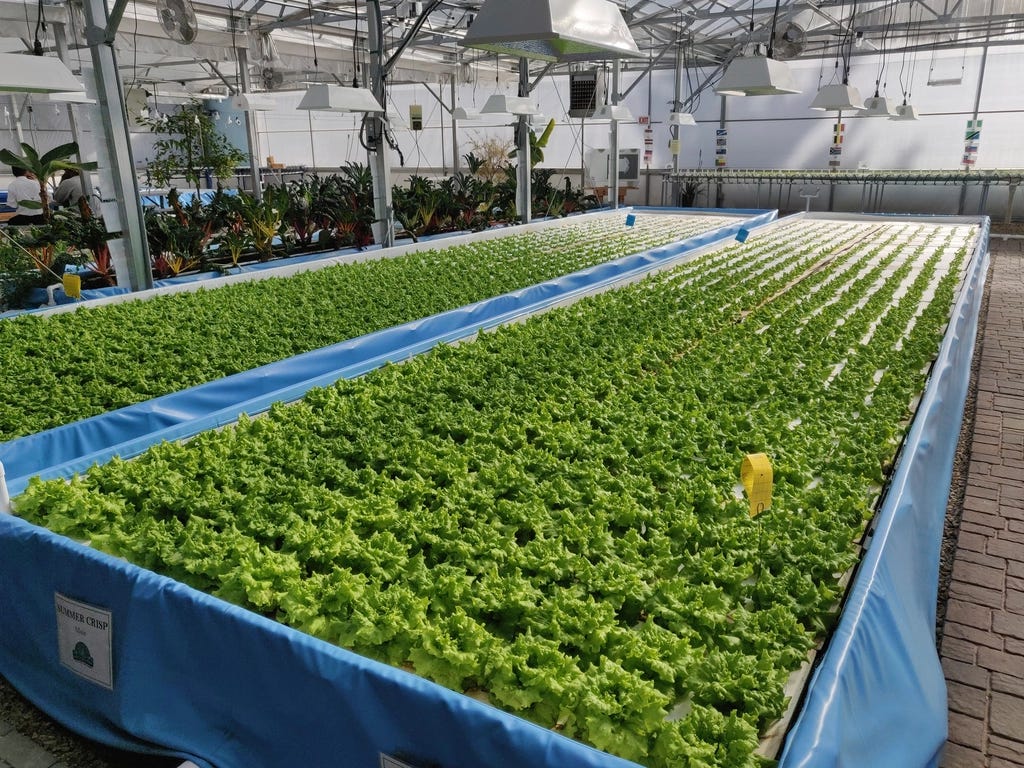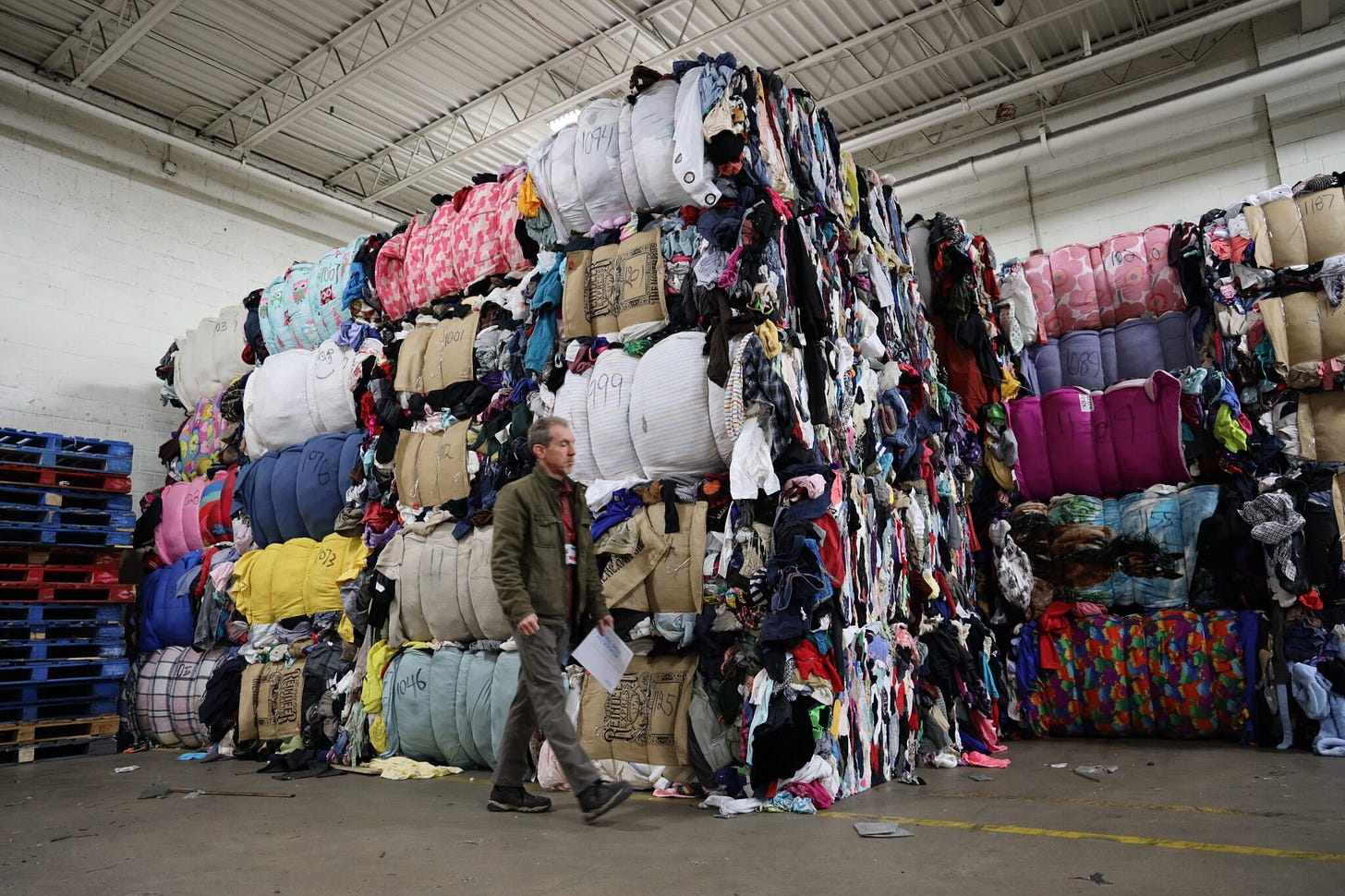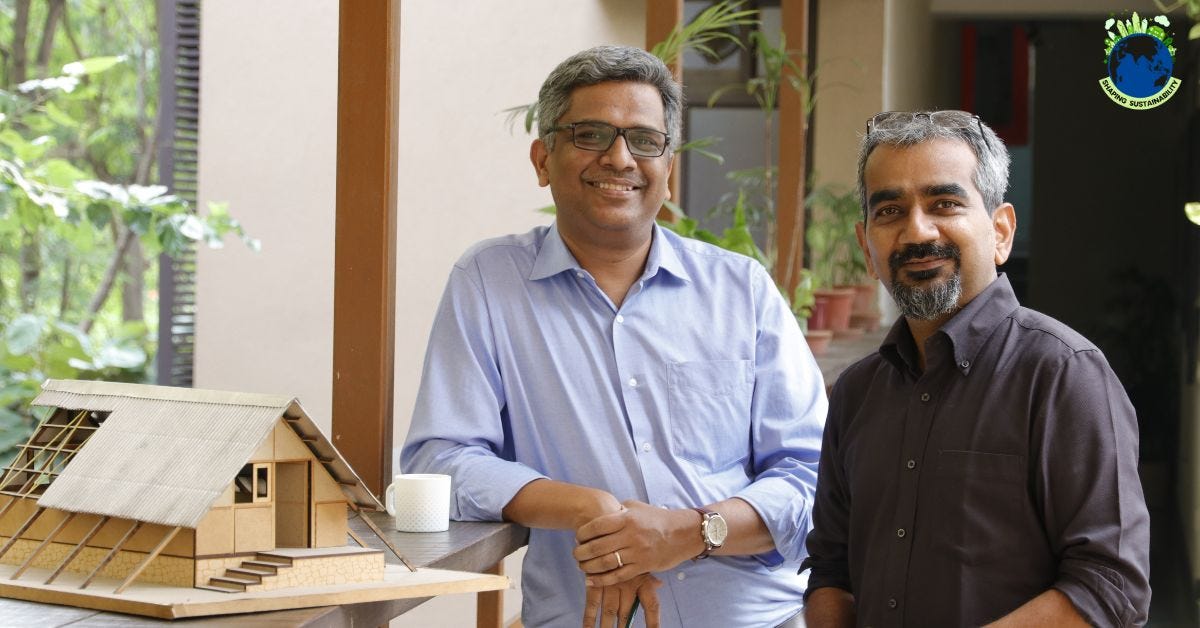Newsletter #2: Earth, Optimised
From Agri-AI and Carbon Solutions to Water-Wise Fashion: How Tech Is Powering a Smarter, Greener Future
Hello, and welcome to the second edition of Earth, Optimised — your fortnightly download on everything at the crossroads of AI and sustainability.
Whether you’re a policy wonk tracking carbon markets, a founder building with edge-AI, or a curious student wondering how chatbots and climate resilience overlap, you’re in the right place.
This edition dives into:
India’s agri-AI moment (and what Kissan LLMs could mean for 2030),
How lab-grown cotton, IoT leaks, and upcycled threads are reshaping water in fashion,
Why nature vs. tech in carbon removal is a false choice,
And two incredible profiles: one saving Indian slums from cyclones, the other protecting koalas with AI.
So grab that coffee, and let’s decode what it takes to build a future that’s smarter, greener, and a lot more resilient.
India’s Agri‑Climate + AI-IoT Crossroads
What’s Happening?
South Asia is experiencing a full climate emergency, with Indian agriculture positioned at the centre of this crisis. An astonishing 60% of households and businesses have been affected by extreme weather, and 75% anticipate it will worsen over the next decade.
On the farm, staple crops are taking a hit.
Oh, and nutrient content is dropping too. Less food, fewer nutrients.
Why AI + IoT Are Now Non-Negotiable
Traditional adaptation tactics are hitting a ceiling. Farmers are scrambling: deeper borewells, leftover crop seeds, and social media tips aren’t enough. That’s where AI and IoT come in:
Hyperlocal Weather Forecasting
Portable IoT weather stations, drones, and soil sensors, paired with AI-powered forecasting (think FarmBeats, local platforms), provide farmers with daily rainfall and soil moisture data, enabling them to plan with precision.Personal Crop Guidance
New-age startups, such as Pune’s AgriHub (IIT Indore) and Digital Green, create LLM-driven chatbots and short video-based advisories in local dialects. AI suggests when to sow, irrigate, or act on pest threats—straight from your pocketEfficient Irrigation & Input Use
Sensors track soil moisture, which is then fed into AI models to make irrigation smarter, reducing water use by 30% and fertiliser waste by similar margins.Disease Surveillance
Solar-powered IoT cameras in fields utilise CNN models to detect early signs of disease (e.g., sCrop prototypes) — accuracy is exceeding 99%, with real-world pilots underway.AI-Driven Insurance & Finance
AI analyses satellite imagery and weather data to fast-track crop insurance, reducing claim time, lowering barriers, and enabling micro‑insurance via UPI wallets.
Real‑World Wins
AI‑4‑AI (World Economic Forum pilot): Supported 7,000 chilli farmers in Telangana—yield +21%, pesticide use –9%, income doubled (~$800/acre). Now covering 500k farmers across 10 districts.
IIT-Indore’s AgriHub: 11 projects live—feeding AI/ML data into platforms to decode soil, weather, and farmer queries in real.
PAU‑BITS Pilani MoU: Launching sensors, robots, GIS & remote sensing to automate nutrient detection and irrigation—aiming to save water and cut costs.
KissanAI Dhenu LLM: India’s first Ag-LLM supports voice-based queries in English, Hindi, and Hinglish, with partnerships with UNDP and Microsoft. It has been piloted in Gujarat and Punjab.
Wadhwani AI’s Krishi 24/7: A real-time news monitoring bot that parses agri and pest alerts across Indian languages for Ministry adoption.
Challenges & Gaps
Digital literacy is needed: Many farmers haven’t used smartphones, especially those from older or tribal communities.
IoT infrastructure: Station costs, connectivity limits, and maintenance overhead in rural zones.
Data ownership & trust: Farmers are wary of sharing soil or yield data without seeing direct benefits.
Scale & cost: Services typically priced at ₹10k/year—beyond the reach of many smallholders.
What Comes Next?
To make AI+IoT a mainstream upgrade, we need:
Subsidised device rollouts via Krishi Vigyan Kendras and FPOs—for sensors, mini-weather stations, pest monitors.
Vernacular AI champions: Fund and scale apps like Dhenu LLM in every major crop and language zone.
Local Data Cooperatives: Enable trusted soil/yield data commons through village-level FPO partners.
Micro-insurance composites: Pair input financing and index insurance into affordable bundles deliverable via chatbots.
Public–Private AI Centres: Defence-grade infrastructure, like AgriHub, that integrates IIT/ICAR data, Wadhwani’s AI capabilities, and state extension services.
Key Takeaways
AI + IoT = smarter water use, better crop planning, fast claims, reduced risk.
Real results are emerging across multiple states, but scale is still nascent.
Roles to play: govseed, KVKs, IITs, startups, Mafikas, and neighbours.
The goal: Ensure AI and IoT shift from “cool tech” to “barn-list essentials.”
GLOBAL INSIGHT: Nature‑Tech Carbon Removal—Why Both Win
Earlier this month, a wave of experts from MIT, WWF, Meta, and more dropped a major truth bomb: the carbon-cleanup world is divided into nature OR tech, and that’s limiting progress.
Here’s how the two sides break down:
Nature‑Based Removal: Fast & Cheap, But Risky
Methods: Reforestation, regenerative agriculture, blue carbon (seaweed, seagrass)
Cost: Usually under $100 per tonne
Pros: Quick to implement using existing ecosystems; scalable across regions
Cons: Reversal risk—wildfires, droughts, human disturbances can negate gains
Investable? Hard to standardise, measure, and bank—wildlife wins on sustainability but struggles with consistency.
Engineered Removal: Durable, Expensive, Niche
Methods: Direct Air Capture (DAC), enhanced rock weathering, biochar, Carbon Engineering fuels
Cost: Typically US $500–1000+ per tonne, but could dip to ~$200/t as scale increases
Pros: Locks CO₂ away for centuries or more
Cons: Requires lots of energy, materials, and policy support
Investable? Bankable once stable, but technology is still nascent and costly
The Portfolio Strategy: Smarter Together
Think like a diversified investor: put capital into both sides.
Strategy Pillar
Role
Nature-first
Rapid roll-out, broad coverage, community engagement
Tech-later
Long-term carbon permanence where land solutions max out
Blended Projects
Combine soil regeneration with biochar, or pair DAC hubs with reforestation, to hedge risks.
Balanced portfolios reduce volatility: when natural projects get hit by fire or drought, engineered projects stay firm, and vice versa.
Challenges Still Ahead
Energy footprint: DAC requires heat and power. best when powered by renewables, but still energy-intensive.
Cost reality: Mature DAC may drop to ~$200/t mid-century, but we’re not there yet .
Measurement & policy: Nature project measurements require better soil sensors and remote-sensing data; engineered needs clear credit markets.
What This Means for Readers
Policymakers: Design carbon markets that reward both natural and technological solutions—no binary choices.
Investors: Structure climate bets like a diversified portfolio—some quick wins, some long-term anchors.
Startups: Stack nature and tech in project design—regenerative agritech with value-add biochar is a killer combo.
Students & Enthusiasts: Learn both ecosystems. Know soil carbon AND sorbents. The carbon-cleanup non-profits and bioengineering teams both need you.
STARTUP SPOTLIGHT: Scaling Smart Agriculture Innovation in India
The International Agri Hackathon in Pune (June 1–3) wasn’t your average event—it was a power-packed launchpad where ag-tech, AI, IoT, and pacey innovation collided.
What Went Down
Nine ‘Clean Plant’ Centres announced—three of them in Maharashtra (Pune for grapes, Nagpur for oranges, Solapur for pomegranates)—with a budget of ₹300 cr.
The aim: deliver eight crore disease-free seedlings annually, supported by Israeli and Dutch tech expertise.
Scientists? 16,000 lab experts were pledged to connect with farmers in a Lab-to-Land mission.
A Startup-FEI tie: Maharashtra's ₹120 crore Fund of Funds + Centre funding to incubate winning hacks—especially climate-smart, scalable ones.
Tech themes: AI chatbots in Marathi, precision fertigation co-developed with Israel, crop‑harvesting robots, drone pest control units, IoT-powered soil–water–plant monitors, and post-harvest refrigeration tech
Highlighted Tech & Startups
AI chatbots in Marathi — offering crop advice to local growers based on real-time alerts and data.
Cotton-harvesting AI bots — building on Pune’s legacy while boosting efficiency and field yield.
Wireless fertigation systems — Israeli‑backed factory prototypes now field-testing in Solapur and Nashik.
Soil‑water‑plant monitoring units — combining IoT sensors with cloud dashboards to help agronomists and farmers monitor real-time health.
SARAL Bot — an autonomous robot for strawberry farming (Arif Ahmed et al., ASABE 2025): performs navigation, weed and disease detection, and plant care. A peek into robotics in horticulture.
Agritech Players Gaining Traction
DeHaat (Patna‑based): Reached 700k+ smallholders via its franchise model, putting AI‑infused crop advice, market links, and input distribution into the hands of rural India.
DestaGlobal (Mumbai): A farm input marketplace for 250k farmers and 2k dealers—now piloting AI recommendations to optimise crop inputs and costs.
Wadhwani AI (Mumbai): Creator of Krishi 24/7—an AI news scanner monitoring pest outbreaks, crop alerts, weather events—in regional languages, and used by ministries.
Why It Matters
From Hackathon to Scale: Money and men-on-ground to convert winning solutions into farmer-ready offerings.
Vernacular & Local: AI bots aren’t just English—they speak Marathi, Hindi, Punjabi—and answer real questions like “when to irrigate?”, “Is my mustard crop dusty mould?”
Tech + Biotech = Supercharges: Clean-plant nurseries running off AI monitors and IoT irrigation systems.
Robotics on the Rise: SARAL‑Bot isn’t niche—it shows where India’s farm mechatronics are heading.
What’s Next?
Pilot-to-Production Journey
Winners should now enter incubator + state linkage phase—test in 100+ farms, build business models.Partnership Expansion
Push Israel, Netherlands, IITs, ICAR, and corporates into more cross-border tech R&D.Market Linkage
Tie Clean-Plant yield into DeHaat/DestaGlobal’s supply chains—ensure disease-free seedlings get sold and micro-finance flows.Impact Metrics
Define KPIs: % disease reduction, ₹ crop income increment, water saved via IoT systems per acre.
FASHION’S WATER WAKE-UP CALL
Shout-out to Sohini Dey of Voice of Fashion for this eye-opening piece on water and style
Why Your Clothes Are Seriously Thirsty
Fashion consumes a staggering 79 trillion litres of water annually—enough for every Dutch household 93 times over. In India, that’s roughly 300 million households consuming their entire annual supply 10 times over to keep up with seasonal wardrobe trends.
A single T-shirt? Around 2,700 litres
A pair of jeans? About 16,000 litres
Dyeing? It’s behind 20% of industrial water pollution
Synthetic wear? A major driver of ocean microplastics—almost 35% of plastic pollution in the water
In her June 5, 2025 feature “How Fashion Can Prevent a Future Water Dystopia,” Sohini digs deep into how brands can (and must) wake up to this dry reality.
Brands Making Waves
ABFRL
Rolled out IoT leak sensors, water recycling systems, and community harvest-recharge setups in Maharashtra, Odisha, and beyond.
Has achieved “water-positive” status. In essence, it returns more water than it uses.
Kering
The luxury giant launched a Water Positive strategy, including regenerative farming, ten Water Resilience Labs (the first in Tuscany, with plans to expand), and a 2050 net-zero target.
Execution challenge: aligning big-brand goals with local water rights and policies.
Indie Voices & Tech Moves
MARGN
World Environment Day 2025 launch, “Silent Guardians” collection used dystopian visuals and AI art to spark water awareness.
No Nasties / Doodlage
By choosing organic cotton, linen, and recycled wool, these brands save hundreds of thousands of litres per ton of fabric
They're also experimenting with upcycled fabrics and natural dyes to reduce both water and energy use.
Lab-Tech & High-Impact R&D
GALY CO Announces Lab-Grown Cotton Using Approximately 99% Less Water Than Traditional Methods.
Waterless and botanical dyeing technologies like DyeCoo and Botanical Colours can reduce process water use by up to 95%.
Innovations from Spinnova & Infinited Fibre are creating cellulosic fibres with similarly significant water savings.
Making Fashion Circular
H&M & Lenzing are piloting waterless dye systems like Deven Supercriticals and ECOHUES, while tracking impacts using the Higg Index. FYI: The Higg Index is like a big report card for fashion brands—it gives science-backed scores on how sustainable their factories, materials, and finished products are. It includes tools like FEM (factory environmental check), MSI (material footprint), and PM (whole garment lifecycle). Brands use it to identify waste hotspots and benchmark improvements, although it currently only tracks up to the factory gate, which means it doesn’t yet cover what happens when clothes are washed or disposed of.
But many brands (nearly 90%) don’t disclose their water use per supply chain, leaving a transparency gap.
Where the Fashion Trail Runs Dry
No shared metrics or standards—brands track differently; consumers don’t know how much water their dress costs to make.
Weak governance and misaligned incentives mean water-saving efforts can stall without real community buy-in.
How We Can Dress for Tomorrow
Track water by basin, not just brand totals.
Train entire value chains—from factory workers to weavers to washing machine renters.
Scale circular fibres and waterless processing, with clear incentives to adopt.
Fund breakthrough technologies, such as lab-grown cotton, air-dyeing, and alternative fibres.
Mandate disclosures & local pacts—loose voluntary CSR won’t cut it.
POLICY WATCH & QUICK HITS
UK’s “Extract” AI Tool for Planning
At London Tech Week, UK PM Keir Starmer announced a £1 billion injection into AI infrastructure alongside Extract—a Google Gemini-powered tool designed to digitise and summarise planning documents in seconds. Coupled with a £187 million “TechFirst” initiative to upskill 7.5 million UK workers by 2030, the move aims to de-clutter the UK’s old-school planning system, speed up housing, and supercharge public services.
India–France AI Summit in Bengaluru
Early June saw the India–France AI Summit in Bengaluru, bringing together policymakers, startups, and researchers to shape ethical, inclusive AI, with a clear eye on climate-tech collaboration. This momentum is setting the stage for the India–France Year of Innovation 2026.
Global AI & Sustainability Pulse
UK moves fast: Extract could free up planners, cut red tape, and accelerate housing pipelines.
India ramps up: IndiaAI’s ₹9,900 cr mission is building local compute, datasets, and agri/ethics-focused AI solutions.
Europe’s push: France and India co-chaired the AI Action Summit in Paris, pushing for more sustainable, inclusive AI, though the UK & US sat out the final declaration
Extract shows the power of turning messy, multi-format data into structured, GPS-linked insights at scale.
Indian Agri-LLMs can adopt this model, thereby helping farmers make instant, data-driven decisions, from soil maps to weather alerts, tailored to their exact fields.
If we develop local language, geospatial Agri‑LLMs with document and map reasoning, backed by sensor data, we could see a significant leap in local, actionable farm advice. This could be India’s next big climate‑tech breakthrough.
SPOTLIGHT: Dr. Anshu Sharma – AI for Disaster-Ready Communities
Meet Dr. Anshu Sharma, Co-Founder of SEEDS India and the visionary behind the Sunny Lives AI model, a leap from community heuristics to hyperlocal, tech-enabled disaster response.
From Rooftops to Risk Scores
Dr. Sharma’s idea is deceptively simple: every rooftop contains clues (shape, material, construction) that AI can read.
By combining satellite imagery with machine learning, Sunny Lives generates detailed risk maps at the household level, helping families determine who should evacuate when a cyclone, flood, heatwave, or earthquake occurs.
Tested in Real Disasters
First used in Cyclone Fani (2019) and Cyclone Yaas (2021), helping authorities reach 50,000+ vulnerable families in Odisha slums with personalised alerts.
Since 2020–25, Sunny Lives has been deployed across Delhi, Nagpur, Chennai, Bhubaneswar, Gaya, Gangtok, Bhopal, extending support to over 100,000 households.
Innovation Heals
The model is now open-source, developed with Microsoft AI for Humanitarian Action, Samhita Health, and Gramener Tech.
It’s expanding into ResSolv™, a sister platform that supports City Disaster Management Plans—deployed in places like Gaya and frameworking resilience for earthquake and flood-prone zones.
Why It Matters
Data-to-action: Instead of broad, city-wide alerts, Sunny Lives zooms in on specific homes at risk, enabling targeted evacuation and resource allocation.
Community intelligence: Interventions use local maps, community quizzes, and school workshops, ensuring AI insights become lived knowledge.
Scalable & affordable: The system is cloud-powered and cost-effective, ideal for rapid replication across diverse Indian terrains.
What’s Next
Geo-scaling to new regions: rolling out to heatwave zones, earthquake-prone cities, forest-fire belts.
Integrating IoT weather stations + satellite feeds + building-level risk intelligence in real time.
Partnering with city admin, disaster management agencies, and UNICEF to bring hyper-local risk intelligence to life in 100+ Indian towns.
WOMEN IN STEM
Meet Camille Goldstone-Henry, a biodiversity scientist and the CEO and co-founder of Xylo Systems, a startup utilising cutting-edge AI to monitor ecosystems and protect endangered species.
What She Does
Xylo’s platform ingests diverse data — from wildlife sightings to environmental sensors — and uses AI to surface “hidden stories” in biodiversity data.
Aiming to track at-risk species (like koalas and orange-bellied parrots), Xylo empowers conservationists and companies to make smarter decisions about habitats and development.
Why It Matters
Climate and Biodiversity Nexus: AI-powered monitoring helps protect critical ecosystems—trees, animals, and water—while informing sustainable land-use practices.
Indigenous Leadership: Camille brings valuable First Nations insight, building tech with cultural knowledge and local guardianship at its core.
Recognition & Reach: Winner of “Women of AI Australia & New Zealand for Climate Change” and 2022 Trailblazer; Xylo is winning industry and conservation awards for its tech innovation.
That’s it for this week. Thanks for reading, optimists. Sign up, follow us on social, and let’s keep this climate-tech conversation going, because the next leap starts with a question, a connection, and a touch of collective curiosity.
- Jayadev




